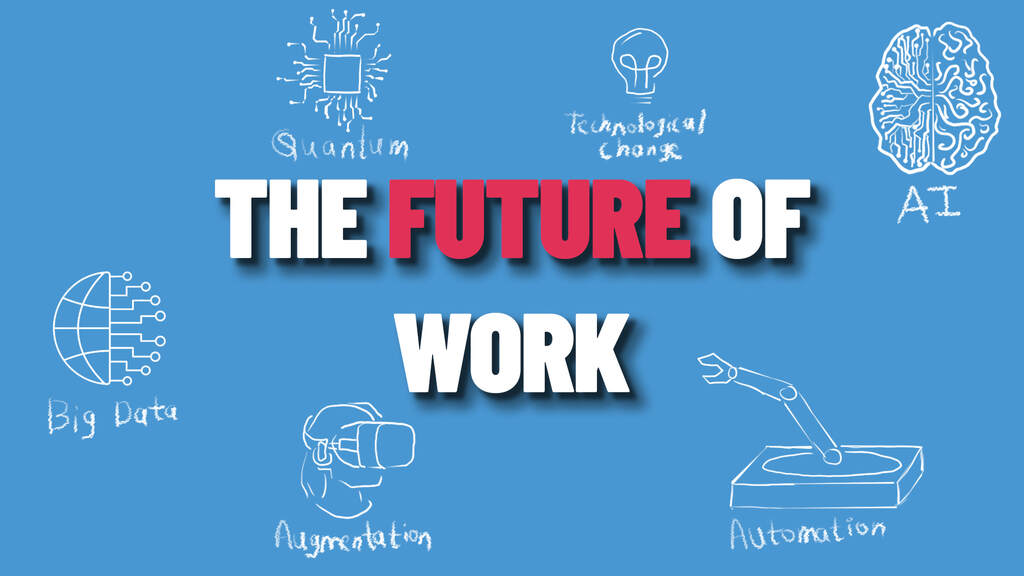The Future of Work: How Remote and Hybrid Models Are Shaping Businesses

The workplace is undergoing a profound transformation. Over the past few years, the concept of “work” has expanded beyond traditional office spaces. The rise of remote and hybrid work models has revolutionized how businesses operate, how employees collaborate, and how employers view productivity. As we move into the future of work, the question arises: How will these models continue to shape businesses in 2024 and beyond?
In this blog post, we’ll explore the future of work and examine how remote and hybrid work models are influencing businesses today and in the years to come. From improving work-life balance to creating global teams, these new ways of working are having a lasting impact on companies, employees, and the broader business landscape.
1. The Shift to Remote and Hybrid Work Models
The remote and hybrid work models aren’t entirely new concepts, but they gained massive traction in 2020, during the COVID-19 pandemic, when businesses were forced to adapt. However, what began as a necessity has now evolved into a long-term business strategy.
- Remote Work: The Rise of the Digital Nomad
Remote work allows employees to work from anywhere, eliminating the need for a daily commute and offering a more flexible approach to managing work and personal life. This model is particularly appealing to employees seeking a better work-life balance, and many businesses have embraced it as a permanent solution. - Hybrid Work: A Blend of Flexibility and Collaboration
The hybrid work model combines in-office and remote work, offering employees the flexibility to work from home part of the week and from the office on other days. This model addresses both the need for flexibility and the desire for in-person collaboration, offering a balanced approach to modern work structures.
Also Visit This Informative Blog
2. How Remote and Hybrid Work Models Are Shaping Company Culture
One of the most significant impacts of remote and hybrid work is the transformation of company culture. Businesses are adjusting to ensure that remote and hybrid teams feel connected, valued, and engaged.
- Maintaining a Sense of Belonging
When employees work remotely or in a hybrid setup, they may feel disconnected from the core of the organization. To combat this, companies are focusing on creating virtual spaces where employees can interact, such as virtual coffee breaks, team-building activities, and online social events. This helps maintain the culture of inclusivity and ensures that employees feel like they’re part of the team, regardless of location. - Clear Communication and Transparency
The shift to remote and hybrid work models has made clear communication even more crucial. Remote employees don’t have the luxury of face-to-face interactions, so companies are implementing tools and processes that ensure clear, concise communication across teams. Regular check-ins, collaborative platforms like Slack or Microsoft Teams, and video conferencing solutions are now integral parts of daily operations. - Focus on Trust and Autonomy
With fewer managers physically present in the office, businesses are shifting their approach from micromanagement to trust-based leadership. Employers are learning to trust employees to manage their own schedules and deliver results without being constantly supervised. This shift has led to a greater emphasis on results-driven work rather than hours worked.
3. The Impact of Remote and Hybrid Models on Employee Productivity
When it comes to the future of work, one of the most commonly debated topics is how remote and hybrid models affect productivity. Early concerns about remote work affecting productivity have largely been dispelled as businesses have discovered that many employees thrive in a remote environment.
- Increased Focus and Fewer Distractions
Many remote employees report higher levels of productivity due to fewer distractions from coworkers, fewer meetings, and the ability to design a workspace that suits their needs. The quiet, customized environment often leads to deeper focus and the ability to complete tasks more efficiently. - Flexibility Leads to Better Performance
Remote and hybrid work offer employees the flexibility to work during hours that best suit their natural rhythms. Whether it’s early in the morning or late at night, employees can optimize their productivity by working when they feel most focused. This flexibility often results in higher output and a stronger sense of ownership over their work. - Challenges in Collaboration and Teamwork
While remote work can enhance individual productivity, it can sometimes hinder teamwork and collaboration. The lack of face-to-face interaction may lead to misunderstandings or a slower flow of information. To address this, businesses are adopting a range of tools—such as project management software, virtual whiteboards, and collaborative document platforms—to ensure smooth collaboration.
Also Visit This Informative Blog
4. Enhancing Employee Well-Being and Work-Life Balance
The rise of remote and hybrid work has provided employees with the opportunity to find better work-life balance. For many, this is one of the most attractive features of modern work models.
- Eliminating Commute Time
One of the most significant benefits of remote work is the elimination of daily commuting. Without the time spent traveling to and from the office, employees can spend more time with family, engage in personal hobbies, or simply rest. This time savings translates into less stress and greater job satisfaction. - Mental Health Benefits
Remote and hybrid work models have also been shown to have positive effects on mental health. The flexibility to structure one’s day, the reduced stress of commuting, and the ability to work from a comfortable environment all contribute to a healthier work-life balance. In turn, businesses are seeing lower levels of burnout and improved employee engagement. - Avoiding the “Always-On” Mentality
While remote work provides flexibility, it can also lead to employees feeling the pressure to be always available. Hybrid work models help mitigate this by establishing clearer boundaries between work and personal time. Businesses are now prioritizing policies that encourage employees to disconnect after working hours to maintain a healthy work-life balance.
5. The Role of Technology in Facilitating Remote and Hybrid Work
Technology is at the heart of the remote and hybrid work revolution. From communication platforms to productivity tools, businesses depend on technology to keep teams connected and ensure smooth operations.
- Cloud Collaboration Tools
Cloud-based software platforms such as Google Workspace, Microsoft Office 365, and project management tools like Trello and Asana enable remote teams to collaborate seamlessly. These tools allow employees to share documents, track project progress, and communicate in real-time, making it easier to work together regardless of location. - Video Conferencing Solutions
Video conferencing tools like Zoom, Microsoft Teams, and Google Meet have become essential for remote and hybrid work. These platforms enable face-to-face communication, allowing teams to hold meetings, brainstorming sessions, and training workshops without being physically present in the office. - Cybersecurity Concerns
With remote work becoming the norm, businesses are placing greater emphasis on cybersecurity to protect sensitive data. Virtual private networks (VPNs), secure cloud storage, and multi-factor authentication are now essential components of any remote or hybrid work setup. Companies must ensure that employees have the necessary tools and knowledge to work securely from home.
6. How Remote and Hybrid Work Models Are Changing Recruitment and Talent Acquisition
Remote and hybrid work models are reshaping the way companies approach recruitment. Employers are no longer limited to hiring within a specific geographic area, opening up the possibility of building diverse teams from a global talent pool.
- Global Talent Pool
Remote work allows companies to hire talent from anywhere in the world, breaking down geographical barriers. This global talent pool enables companies to select candidates based on skill, experience, and cultural fit, rather than proximity to the office. - Flexibility in Job Descriptions
Job postings now often feature flexible work options, which appeal to a broader range of candidates. Employers who offer remote or hybrid options are seen as more attractive by candidates seeking better work-life balance or those with family commitments. - Improved Diversity and Inclusion
Remote work also plays a role in improving workplace diversity. By hiring from a broader geographic area, companies can bring in individuals with diverse backgrounds and perspectives, fostering a more inclusive culture. Furthermore, remote work accommodates employees with disabilities, who may have difficulty commuting to a traditional office.
Also Visit This Informative Blog
7. The Future of Work: What to Expect in 2024 and Beyond
Looking to the future, remote and hybrid work models will continue to evolve. Here are some trends to watch as we move into 2024 and beyond:
- Hybrid Models Becoming the Norm
As businesses recognize the benefits of remote work while also valuing in-person collaboration, hybrid models will likely become the default. Companies will continue to experiment with different hybrid structures to find what works best for their teams. - Increased Focus on Employee Experience
Employers will place greater emphasis on creating positive employee experiences in remote and hybrid work environments. From virtual social events to well-being programs, businesses will prioritize initiatives that foster a sense of community, engagement, and support. - Advances in Remote Work Technology
As technology continues to advance, remote work solutions will become even more sophisticated. Virtual reality (VR) and augmented reality (AR) tools may be integrated into work environments, allowing for more immersive and collaborative experiences across distances.
Frequently Asked Questions (FAQs)
Q1: Will remote work continue to be popular after the pandemic?
Yes, remote work is expected to remain popular. Many businesses have seen the benefits of remote work, including cost savings and increased employee satisfaction. Hybrid models, in particular, will likely remain a dominant approach.
Q2: How can businesses manage productivity in remote teams?
Businesses can manage productivity in remote teams by setting clear expectations, using project management tools, and ensuring regular communication. Trusting employees to manage their schedules and output is key to success in remote work environments.
Q3: What are the main challenges of hybrid work?
Hybrid work models can pose challenges related to communication, collaboration, and ensuring all employees feel included. Businesses need to establish clear guidelines and use the right technology to overcome these hurdles.
Conclusion About Future of Work
The future of work is undoubtedly shaped by the rise of remote and hybrid models. These work structures offer flexibility, foster global talent acquisition, and promote a healthier work-life balance. While challenges remain in terms of collaboration and communication, businesses are finding new ways to adapt and thrive in this changing landscape. As we move forward, remote and hybrid work models will continue to shape the way companies operate, with technology and employee well-being at the forefront of this evolution.







